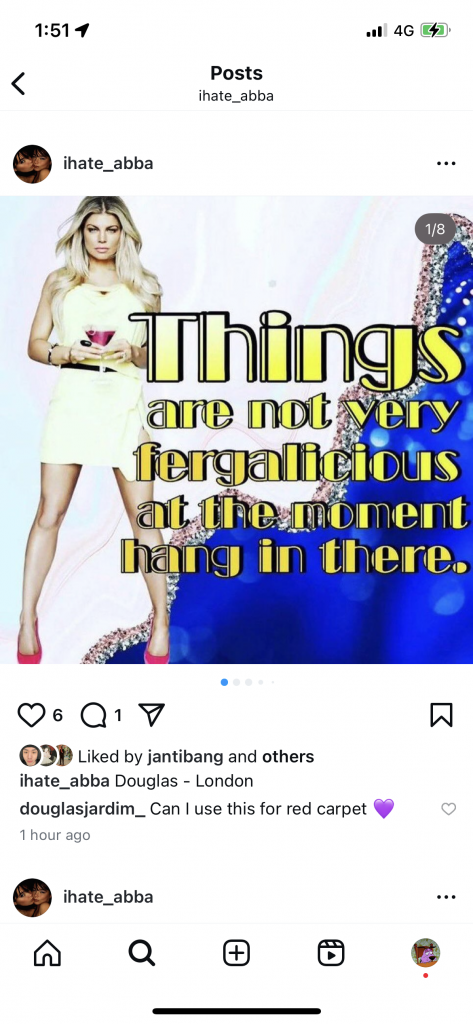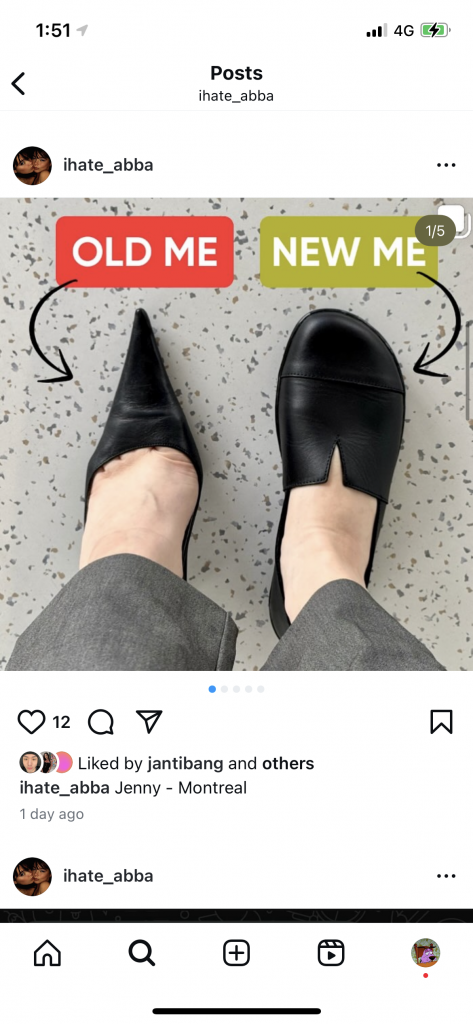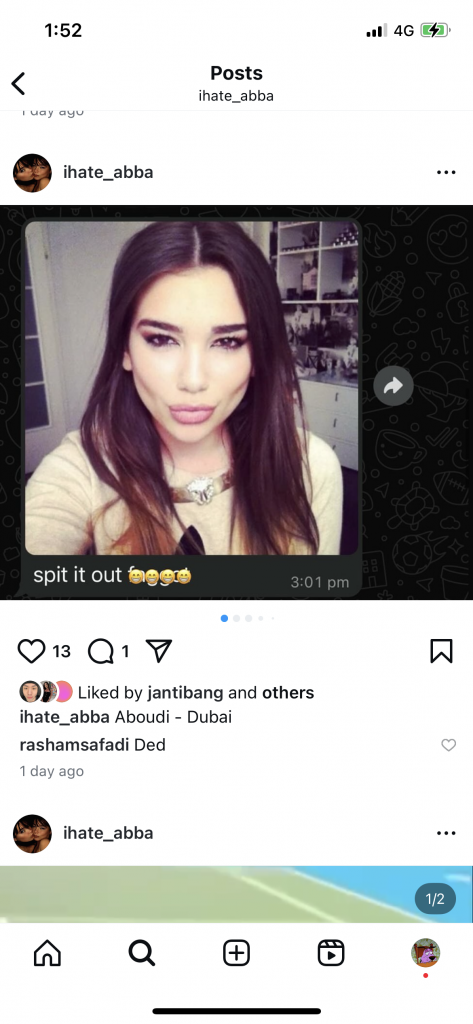After completing the first intervention with limited success in getting memes, I attempted the same idea in a new context: online. I turned to the Instagram account @ihate_abba, which by this point had gathered a modest but engaged following. I posted on my Instagram story asking my followers to send in a meme or image they felt represented them (refer to the posts below).


To my wonder, I received an overwhelming number of replies from people who sent in a wide range of memes. This marked a clear contrast to the offline version of this intervention. Unlike the first attempt at CSM, where the hopeful participants were mostly strangers, the online context had a digital familiarity. Many participants were people I already knew who shared similar niche interests. This made participation more inviting.
The submitted memes included self-made creations, screen-grabbed images, and well-circulated formats. Each was posted to @ihate_abba, with the sender’s name and location in the caption (see examples below).



The content sent in by the participants shared common traits, both visually and conceptually. The memes included chaotic graphics and lo-fi aesthetics that challenged traditional design norms. Absurd compositions and deep-cut cultural references, mainly related to Gen Z and queer-coded internet humour. Despite the chaos of the memes, they captured genuine feelings, emotions and niche experiences. Most importantly, they served as a community-driven digital vernacular. A language of references and irony that is instantly recognisable to those within the subculture.
This reinforces the idea that Gen Z users can connect regardless of geographic location through this shared visual culture. A single meme can reference music taste, fashion cues, niche internet jokes, or political sentiment. Ultimately behaving as “if you know, you know.”
Some senders sent original content, but the majority were found memes or iterated, highlighting that originality is not the point, but resonance is. In the world of memes, authorship is fluid. Memes exist to be passed on, reshaped, and iterated. As Roberta Katz et al. observe, “the desire for collaborative ways of working and problem solving is widespread among postmillennials” (2021, p.21). This collaborative Gen Z spirit is reflected in meme culture, where the content is encouraged to be iterated, shared and embraced.
While this intervention didn’t yield the kind of discomfort or insight the first one did, it proved far more successful in participation and confirmed several key ideas about how memes function. It also helped influence how I will proceed with research and future interventions and that creating a comfortable, familiar, digital-first space is more likely to invite authentic engagement.
This intervention made it clear that memes are more than just funny images but rather tools of identity signalling. Each participant submission provided insight into how individuals see themselves through the style, tone, and type of humor. The memes almost behaved as self-portraits of the participants. I wasn’t archiving jokes but curating a visual map of how a specific online culture communicates, shares values, and recognises itself.
You can access the account here!
References:
Katz, R. Ogilvie, S. Shaw, J. Woodhead, L. (2021) Gen Z, Explained: The Art of Living in a Digital Age. Chicago : The University of Chicago Press
